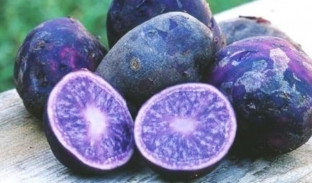Potatoes, tomatoes, cabbage, carrots, cucumbers and other vegetables are familiar and familiar to all of us. But in the world there are a considerable number of such vegetable crops, which not only rarely appear on our table, but are almost certainly absent. And in general, this is not true. It is much more useful and interesting to expand the food range. Еstet-portal.com will introduce you to the variety of exotic vegetables. It is very likely that soon rare fruits can be found on the shelves of our stores, and you, already knowingly, will be able to buy vegetable novelties and try them. At least you won't make the same mistakes that often happen when trying to cook something from unfamiliar foods. And when it is not clear how to cook and, moreover, eat, as a result, a dish, which includes "strange" Components, can be absolutely without reason not accepted. Therefore, we suggest that you familiarize yourself with some representatives of such exotics.
Tasty and healthy: the most unusual exotic vegetables
Watermelon radish
This is a juicy and firm vegetable. However, based on the name, you should not expect it to be sweet, like a watermelon. Quite simply, the vegetable has an appropriate internal color – most often it is purple. In general, at the sight of such a radish, it seems that the vegetable we are used to has been turned inside out: it is white on the outside, but inside it has such an unusual color. The root crop is large enough (it is the size of a baseball) and "consists" of closely related to cabbage, which is why it is a little bitter. In sliced form, such a radish looks like watermelon slices. The vegetable is considered healthy due to its richness in potassium.
Romanesco cabbage (coral)
It tastes similar to broccoli as it is its closest relative. The vegetable has rather exotic forms (its buds grow in a spiral), and the first mention of it dates back to the 16th century. and have come down to us from the inhabitants of Italy.
Romanesco will appeal even to those who do not like cabbage at all: the fact is that it has the finest delicate taste and is even tastier than broccoli.
Romanesco is not crumbly, has a sweetish taste with nutty notes. Unlike broccoli, it contains more carotene and zinc. Coral cabbage is also incredibly rich in antioxidants.

Black Tomatoes
This variety of vegetable appeared on sale in the markets of Britain. Outwardly, it is like an ordinary tomato, the only difference is in color. But the taste of kumato (as the new variety of vegetable is called) is more saturated than that of the red tomatoes we are used to, somewhat sweeter. And, according to experts, kumato contains a certain substance that greatly enhances the libido of a person. In fact, this variety is a cross between an ordinary tomato and a blackberry. In addition to the benefits of the red tomatoes we are used to, the black vegetable is incredibly rich in antioxidants and vitamin C. It is also worth noting that it took more than six years of scientific research for specialists to improve it.
Chayote
The fruits of the Mexican cucumber (as this vegetable is also called) are similar in shape to a pear, they have white flesh and a light green peel. They keep well, are very healthy, nutritious and have a pleasant taste, reminiscent of sun-dried tomatoes. The fruit is commonly used in dietary nutrition. Chayote comes from Costa Rica, where the local population prepares salads with it, pre-boiled.
Rainbow cabbage
This variety of cabbage also appeared in England. The inflorescences of such a vegetable are painted in bright saturated colors: purple, orange, green. The taste of new cabbage is normal, but during cooking and after it, the vegetable does not “part”; with its unusual coloration. Representatives of the company producing such cabbage assure that the beautiful colors of the vegetable – by no means the consequences of the intervention of genetic engineering in the cultivation process, but the result of a very long (many decades) selection.
The main advantages of extraordinary cauliflower: in the orange variety, the amount of beta-carotene prevails 25 times (than in the inflorescences we are used to); purple – rich in anthocyanin, this pigment is incredibly important for the prevention of heart disease by slowing down blood clotting.
Any food was once unfamiliar to us. But over time, people got used to it and today they don’t even know how to do without it. So, most of the vegetables in our menu – "immigrants" from other countries. They were delivered, raised and now it is difficult for them to find a replacement on our table. With a high degree of probability, it can be argued that a similar fate awaits the vegetables presented above, while exotic for us.






Add a comment